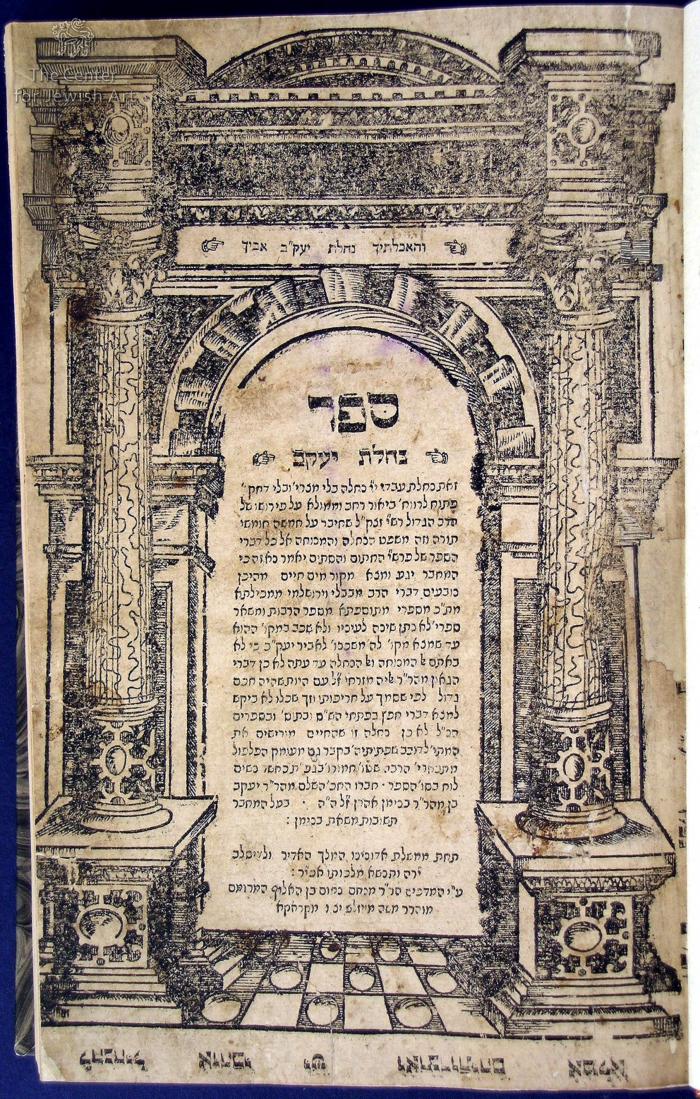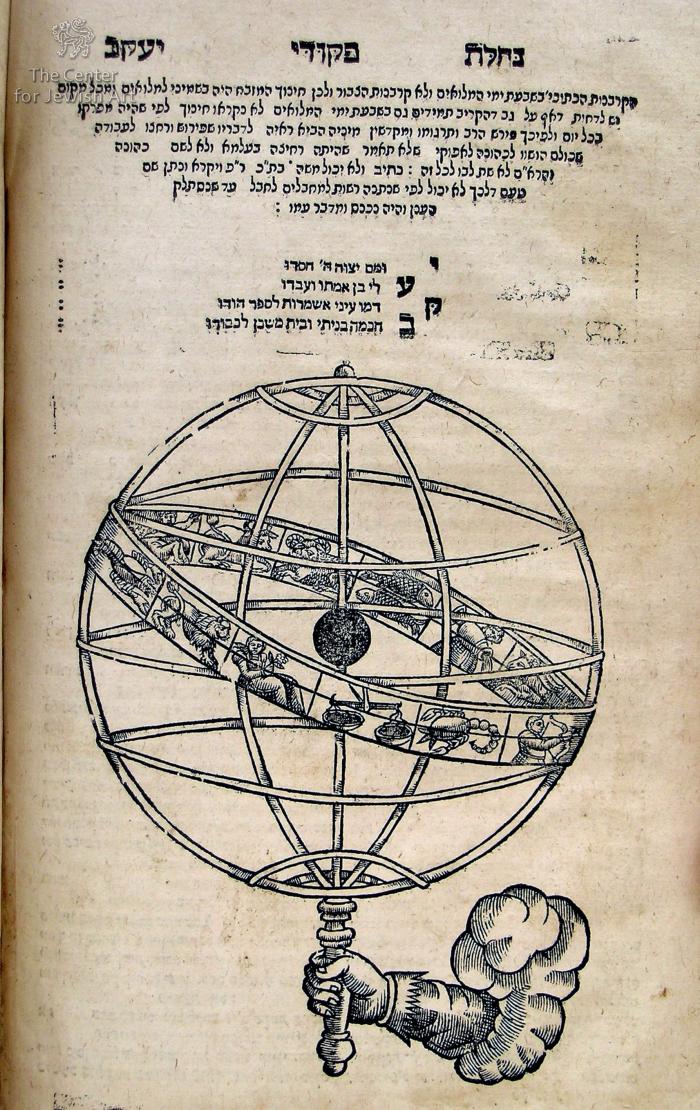Obj. ID: 38861 Nachalat Ya'akov by Ya'akov ben Binyamin Aharon, Cracow (Kraków), 1639 - 1642

sub-set tree:
This text was prepared by William Gross:
A super-commentary on Rashi by R.Jacob (Yekel) ben Benjamin Aaron Slonik (d. 1643), son of R. Benjamin Aaron ben Abraham Slonik, author of the Seder Mitzvot ha-Nashim and Masat Binyamin. Jacob Slonik served as rabbi in Be’er and was active in the Va’ad Arba Aratzot, joining in issuing approbations with the leading rabbis of his generation. He writes in his introduction that much of his commentary is based on what he heard from his father on Shabbat in which he explained Rashi and [another great sage] R. Elijah Mizrachi. He also consulted the Chumash with three Targumim printed in Venice (1591) and found numerous differences between the commentaries there and their sources in the Talmud. The work’s title reflects, among other things, the inheritance (nachalah) he received from his father, and his own name (Ya’akov).
Title page with architectural gateway typical of Cracow in this period. On the reverse of page 121 is an illustration of a hand holding an open strut globe encircled by a band carrying the signs of the zodiac.
Menachem Nachum Meisels, scion of a distinguished Cracow family, established a Hebrew press in this city in 1630, acquiring the typographical equipment that had previously belonged to the Prostitz press. In addition, he had new letters cast in Venice. Nonetheless, his books reflect the Prague style, no doubt due to the influence of his manager, Judah ha-Kohen of Prague. Meisels was assisted in the press by his daughter Chernah and by his two sons-in-law, Judah Leib Meisels and Simeon Wolf ha-Kohen Ashkenazi. The Meisels press supplied books to Polish Jewry for several decades, publishing the necessary biblical and liturgical works, popular books in Yiddish, reprints of classical works, and new titles.



